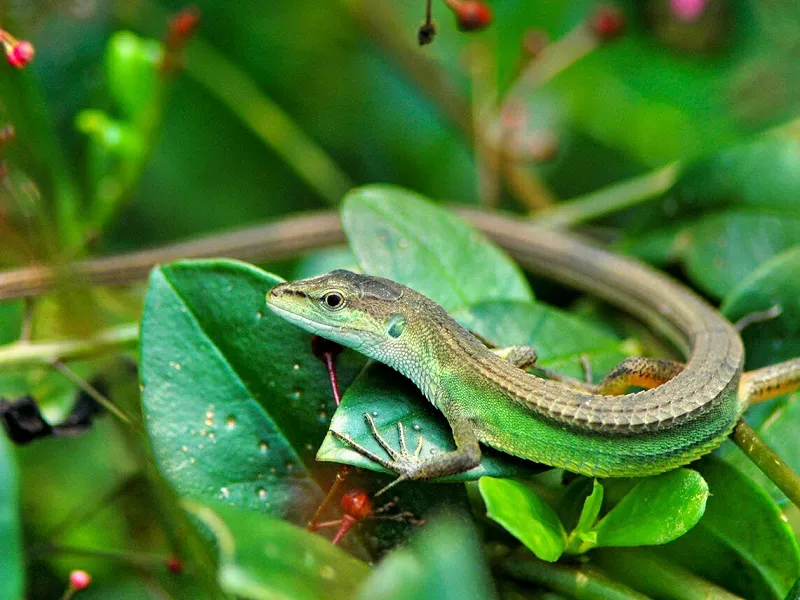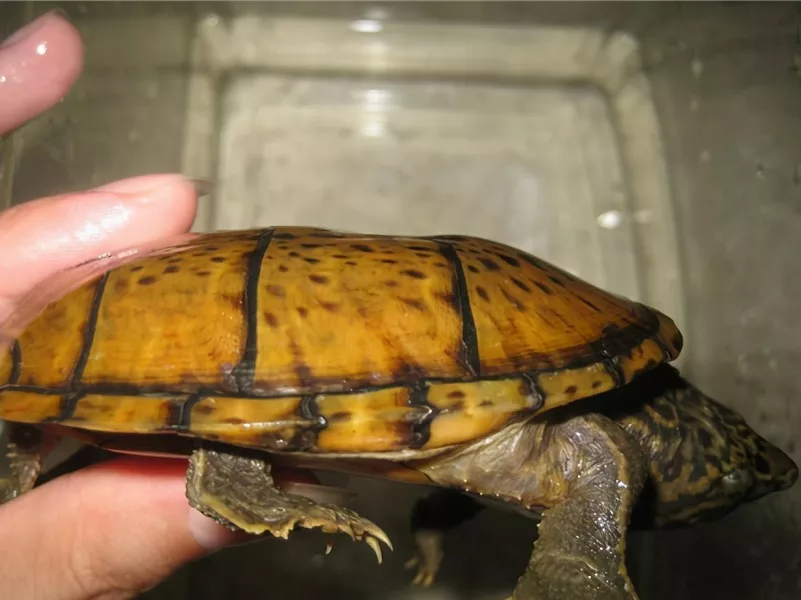What is a takydromus septentrionalis?
Takydromus septentrionalis, is a species of lizard in the family Lacertidae. It is endemic to China.
What does takydromus septentrionalis look like?
The head of the takydromus septentrionalis has large symmetrical scales without upper nose scales. One forehead and nasal scale, the front end is blunt and round, and the rear end is an acute angle. Forehead scales 1 pair, tangent to left and right. Frontal scales are pentagon-shaped, with 4 pairs of upper orbital scales, the first pair is extremely small and granular. Forehead scales 1 pair, pentagonal, tangent to left and right. The apical scales are small, rhombic, and the posterior tip is connected to the posterior smaller pillow scale. The occiput is covered with granular scales, the scales gradually become larger and ribbed backward, and the neck is irregularly arranged in rows of ribbed scales. The central 2 rows of the 6 rows of large scaly scales on the back gradually become smaller after reaching the middle of the body, and finally disappear, and some individuals disappear until the sacral region. The ventral scales are large, with 8 columns and strong ridges. There are 2-3 rows of edge scales on the side of the body, which are obviously smaller than the ventral scales. The rest of the body is scaly. The backs of the limbs are ribbed, and the ventral scales are smoother. Anal preanal scale 1, was inverted trapezoid. 1 pair of groin fossa, located at the base of the thigh. The rear of the cloaca and both sides of the tail base are covered with granular scales, and the later scales become larger and ribbed. The tail scales have strong edges, and there are 14 rows of scales in the middle of the ring tail. The palm and plantar surfaces are covered with scales of the same size. Body color changes greatly during life, with grass green, brown-green or brown on the back, yellow-green or grayish white on the belly, a light longitudinal stripe from the eyes to the shoulders, a longitudinal stripe on the back of the male body, and irregular dark spots on the side of the body Spotted, soaked specimens turn green to light blue.
Living habits of takydromus septentrionaliss
The takydromus septentrionalis inhabits wasteland, farmland, tea garden, roadside, rubble, thickets and grass in mountains and hills. Feeds on various invertebrates, such as locusts, ratwolves, moth larvae, etc. In mid-to-late October, when the temperature drops to about 13°C, they enter hibernation one after another. Hibernation caves are mostly hidden under grass roots, under tree roots and in earthen caves beside field ridges, or under roadside piles of rocks and firewood. In April of the second year, when the temperature rises above 13°C, they go to sleep one after another. When just sleeping, it is only active at noon, and it is more common in the grass under direct sunlight. In summer, it is active and foraging outside from early morning to evening, but it is more common at noon in the shade. Do not go out for activities in heavy rain, less in light rain, and more in fine weather after rain. The takydromus septentrionalis is very agile, and its slender toes and tail can help it climb on the bushes and grasses. It can escape quickly when it encounters enemies and disturbed, and it is not easy to catch. The tail can be broken and can be regenerated.
Breeding method of takydromus septentrionalis
The takydromus septentrionalis is oviparous, laying 2-4 eggs at a time, and many can lay 6 eggs, which is multiple spawning. The newly laid eggs are milky white, the egg shell is leathery, then turns white and hardened, the egg diameter is (10-15) mm × (6.5-9) mm, the spawning occurs during the day, and the spawning duration varies with the spawning time. How much varies, usually about half an hour. Eggs are laid in sandy soil with a certain humidity or under dead leaves, and hatch at natural temperature. At a temperature of about 27 °C, the incubation period is about 44 days, and at a temperature above 30 °C, it can hatch in about 35 days. During the hatching process, the volume of the eggs increases by 2/5 compared with the time when they are just laid. After the hatchlings emerge, the eggshells shrink.

















